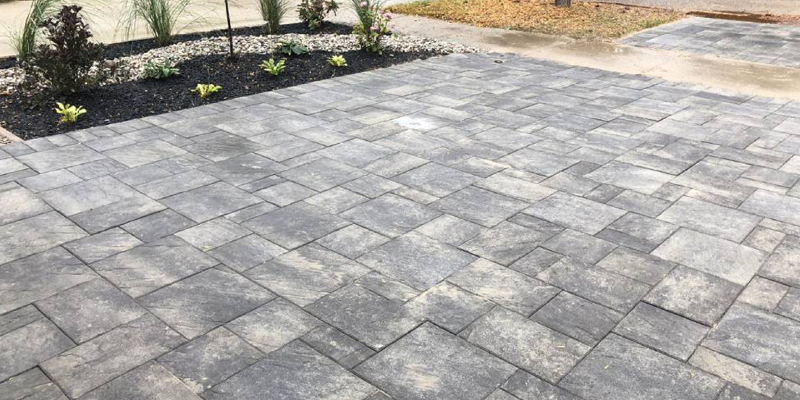The rounded, soft tones fade into the twilight, the sun sets behind a cobbled path twisting off into the distance. On closer inspection, the path is a multicolored array of black, reddish, white, and brownstones sealed in an inconspicuous grout. An old, rustic look with the convenience of a modern non-slip finish.
Interlocking stone pavers are a revived practice, a trend transforming a centuries-old tradition found in Roman roads into a stylish, convenient, highly durable building and landscaping accessory. A wonder of modern innovation. They come in a range of colors, shapes, and sizes and are made from a variety of materials.

Granite pavers, like other stone pavers, are easily maintained. They are strong and dense due to their volcanic origin. They are used both indoors and outdoors. Cobblestone driveways containing granite offer maximal grip, while inside they can be smoothed to give an impressively designed continuity. They can be used effectively as non-slip surfaces surrounding swimming pools or in hard-wearing wall tiles. A light-colored form of limestone called travertine is commonly used in pool-sides, patios, walkways, and open-air entertainment surfaces. It’s ideal if you want a surface that remains cool in direct sunlight and is salt tolerant – perfect at seaside locations. Due to its porous nature, it has the advantage of being non-slippery when wet but should be properly sealed to prevent it from absorbing water, particularly when used on surfaces such as shower tiles.
Another type of stone commonly used in interlocking surfaces is basalt. It is a dark volcanic rock commonly used in driveways and walkways. It is well known for its high strength and durability. Basalt is a natural part of the elegant Palisade cliff formation running through New York City. It is used as a distinctive wall decoration in some homes.
Sandstone, with its unparalleled natural beauty and variety of colors, is commonly found in driveways, walkways, and patios. Its naturally existing colors are a spectrum of whites, greys, and browns. It comes in a variety of shapes and can be cut to size. Different types of interlocking stone can be used in combination to form many attractive, colorful designs. Traditional Portuguese pavement stones, for example, consist of different kinds of stone – typically black basalt and white limestone – laid in eye-catching patterns. These are particularly successful at highlighting a nearby building or another landmark.
There are many advantages of incorporating interlocking stones in the design of indoor and outdoor spaces. They are easy to install, maintain and replace, with a minimal amount of tools and materials. They are generally long-lasting and suitable for a range of climates, achieving freeze-thaw durability without the need for expansion joints. The ability to withstand high traffic – pedestrian or vehicles – makes it very popular, additionally meeting or even surpassing industry standards.
If you’re looking for that designer look, a traditional stroll back in time, or an exciting modern, bold impression – interlocking stone offers an enticing array of striking options to explore and savor.
